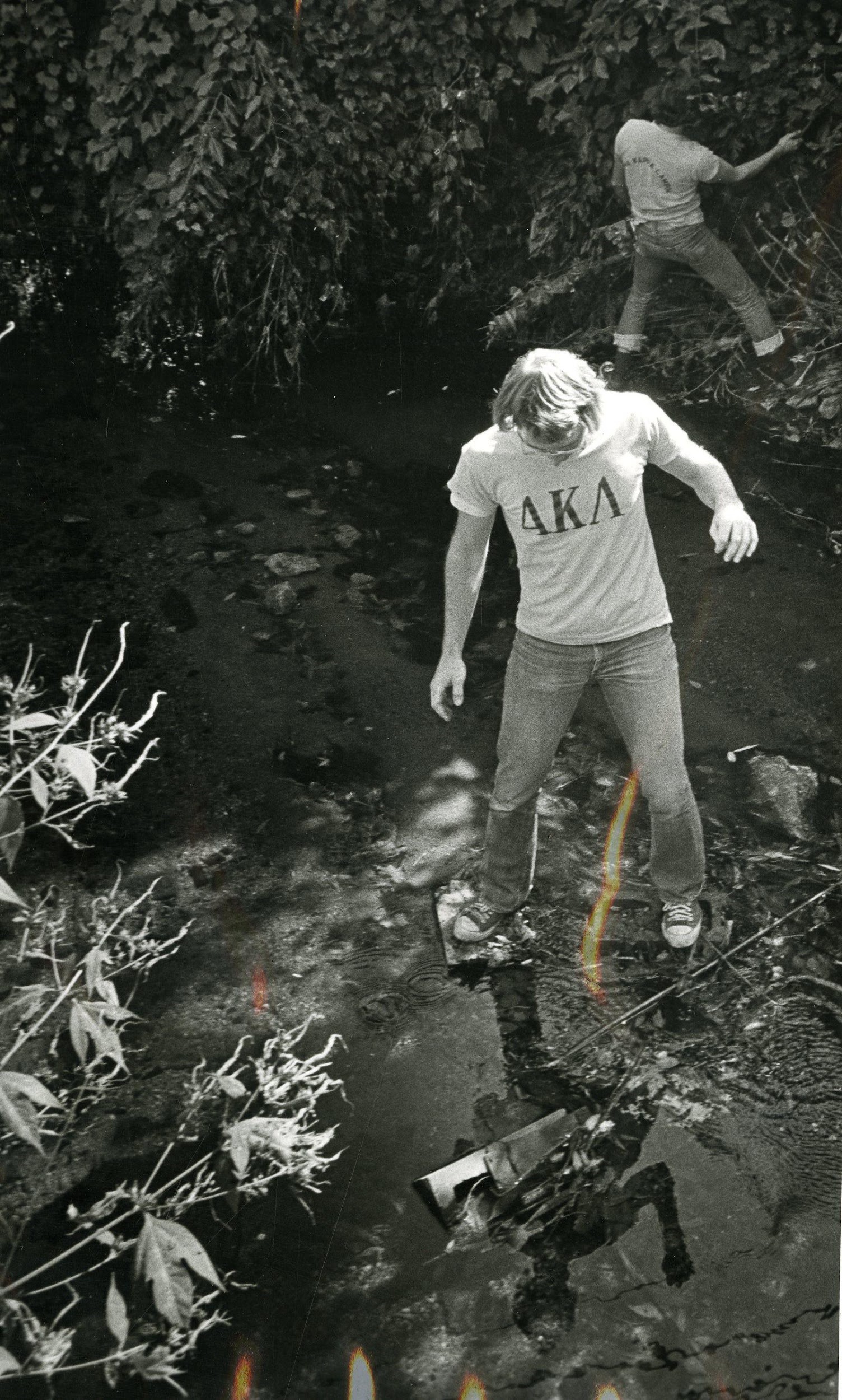
Boneyard Creek, which runs through 3.3 miles of Champaign and Urbana, has been a significant landmark in the community for centuries. However, by the 1970s, the creek was filled with sewage and flooded periodically, often causing substantial damage. In celebration of the nation’s bicentennial, the Champaign County Bicentennial Commission established the “Horizon ’76 Project” to transform Boneyard Creek. The project was entitled “Our Boneyard.” In July of 1976, the Boneyard Creek Commission was formed to plan for and manage the development of the creek. Members of the commission included representatives from Champaign, Urbana, both Park Districts, and the Urbana and Champaign Sanitary District.
A master plan was released in the fall of 1978, but the changes recommended were not implemented in time to prevent a devastating flood in July of 1979, which caused over a million dollars in damages. Of the damages, $603,000 occurred at the University of Illinois, $710,000 at private businesses, and $83,000 to residential properties. A report on Champaign’s flooding problems published by the U.S. Army Corps of Engineers lists the creek as “overbank flooding, ponding, sewer backup, and in some cases a lack of sewers altogether.” The significant flooding in some areas was primarily caused by “inadequate capacity.” This analysis states that the highest priority projects to stop chronic flooding would cost $4.6 million and that “project accomplishments have been slow on Boneyard Creek projects due mainly to lack of financing.”

An article in the News-Gazette from March 13th, just a few months before the flood, discusses the commission’s delay in acting on the plan. Among other logistical concerns, a project consultant is quoted saying, “there’s so little money around.” Addressing the commission years later, Champaign mayor Dannel McCollum explained that these proposals “went unimplemented due to lack of funding.”
Despite numerous projects and improvements undertaken in the 1980s, a 1993 flood delayed construction of the Grainger Library at the University of Illinois and caused millions of dollars in damages. In 1994, the City of Champaign solicited community input on a plan to improve Boneyard between Neil and Wright streets. By 1996, Champaign and Urbana finally began implementing necessary aspects of the 1978 plan, including a large detention basin to prevent flooding. Other goals outlined in the master plan, such as improved water quality and additional public spaces such as paths and recreational areas along the Creek, were also accomplished, notably in Helms Park and Scott Park in Champaign. The original Commission was disbanded after the completion of the 2nd Street retention pond, which opened in 2012, and improvements to the University of Illinois campus.
The Boneyard Creek Commission Records at the Champaign County Historical Archives contain reports and other documents generated by the Commission, as well as articles and other materials pertaining to the Creek. Records of flooding include lists of property and monetary losses incurred. One property owner’s losses are listed as $190 and “nervous jitters.” View the newly processed Boneyard Creek Commission Records and Boneyard Creek Collection in the Archives for more information about Boneyard Creek and its role in the community.
Izzy Westcott
former Archives Practicum Student
